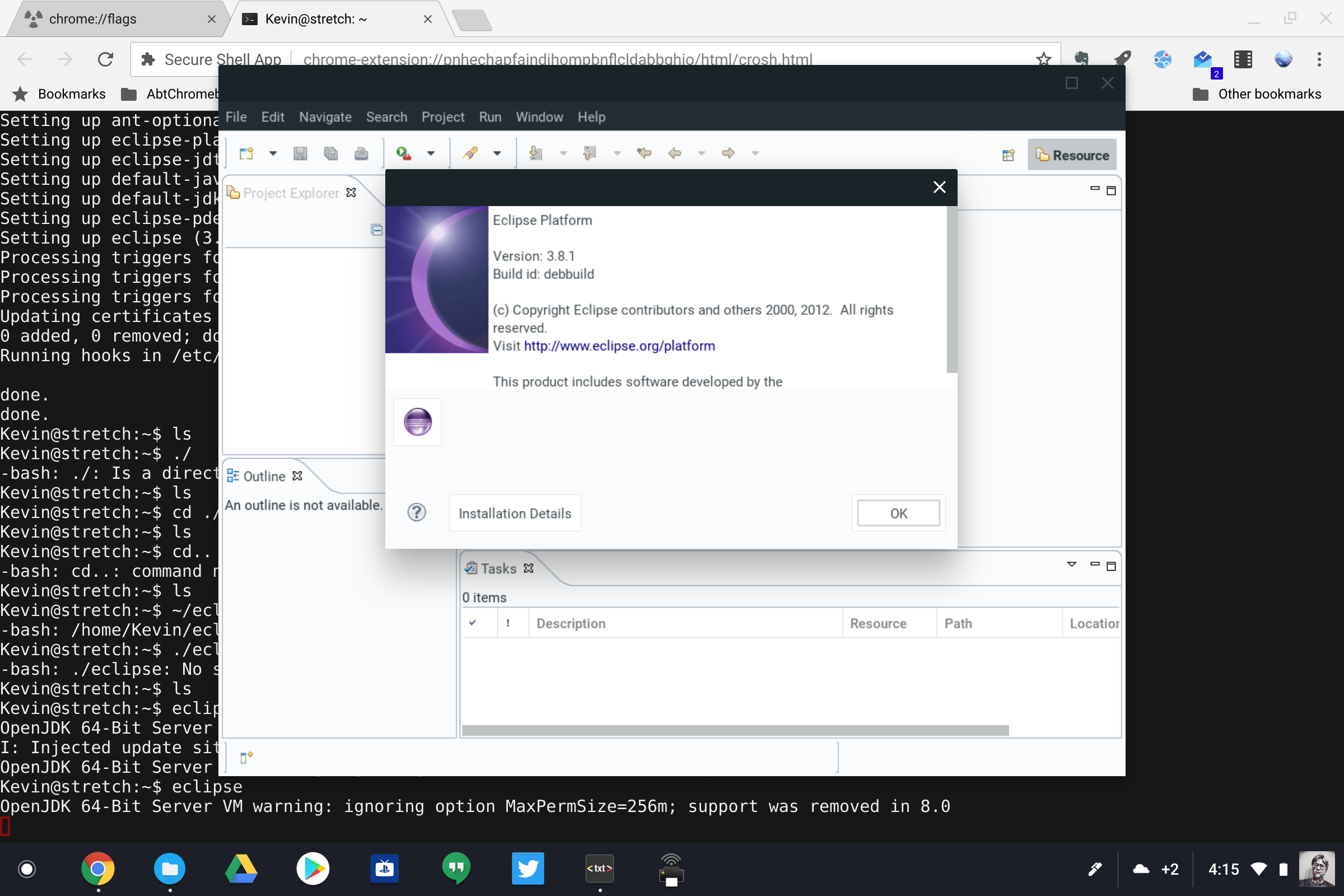Development work is continuing on Cheza, the Qualcomm Snapdragon 845 detachable Chromebook that made an appearance in the Chromium OS code commits back in June. Most of the recent code is aimed at getting Cheza to boot with the proper driver support to run Chrome OS but I noticed an important change recently committed telling us that Cheza will have Project Crostini support for full Linux apps.
I won’t say I’m surprised to see this: Any future Chrome OS devices with the proper Linux kernel and chipset capabilities should have Project Crostini out of the box at this point. And although this device will run on an ARM processor, Google has made progress bringing Crostini to that chip architecture: The Acer Chromebook R 13 and its MediaTek ARM chip recently gained Linux app support in the Dev Channel for Chrome OS 72. Still, it’s nice to have confirmation. And remember, Linux apps compiled for x86 processors won’t run on an ARM device, so app support may be a little more limited than on Chrome OS devices powered by Intel chips.
What else do we know about Cheza? A fair amount although most people are interested in a release date. Keep in mind this is likely a reference device that I suspect Qualcomm to show off in January at the Consumer Electronics Show at the earliest. I’ll be there, so if Cheza makes an appearance, either by Qualcomm or a hardware partner that will build and brand the device, I’ll get whatever information I can.
For now, we know that Cheza will be a detachable tablet, like the Google Pixel Slate and HP Chromebook X2, is likely to support a keyboard that includes a second battery for a longer run time between charges, have fast UFS storage, and include an integrated LTE radio since the Qualcomm Snapdragon 845 comes with that capability.
When it arrives, the questions are around the device’s performance and the price, which are two very related attributes when it comes to value.
Don’t assume since it uses a processor used in current high-end Android phones that it will be cheap though: Qualcomm has said it was staying out of the Chromebook market until average selling prices for this market segment were above $500. And as far as performance, this chipset powers a few always-on Windows slates such as the HP Envy X2 (pictured above) and didn’t seem to impress many. Chrome OS is very different from Windows though, so I’m cautiously optimistic on the performance front.




5 Comments
A previous post noted that Cheza shares the same resolution as a number of phones. It’s a got of a number of phone-like qualities:
* Screen resolution
* SIM card
* ARM chip
The “extra battery” accessory would also benefit a phone more than a tablet or laptop.
What if Cheza is the first ChromeOS-based phone with a pogo-pin keyboard-with-extra-battery accessory?
From a user’s perspective, it would work like Samsung’s “Linux on Dex”. It function as an Android phone until you plugin into a keyboard/mouse/monitor, at which point it behaves with Chrome OS with Android app support.
From a technical perspective, the Chrome OS design language has merged and Android apps are already supported. Chrome OS could be set to run the Android launcher at boot.
The faster UFS storage would also help with desktop-class performance.
OK, so there are likely some challenging details in there and odds are high there would be more rumors or leaks about this if it was really happening. 🙂
Android could also be a possible “Alt OS” referenced in commits. There is help message wording like “Enable AltOS mode on next boot”, AltOS code is apparently largely working in ChromeOS, but the use has not been announced yet.
So it’s possible a device like this could boot into Android or ChromeOS, and possibly even quickly reboot when keyboard/video/mouse is plugged/unplugged.
That seems like it would require even less development work than what I described above.
To me that’s more interesting a device that dual boots ChromeOS and Windows 10 desktop operating systems.
Although you could be right, I’m leery, Mark. Alt OS has been renamed to Dual Boot (which doesn’t mean anything but thought to mention) and there are numerous code references to supporting various Linux distros. Additionally, the Dual Boot project has referenced certain certifications for Windows device drivers; I haven’t seen any mentions of Android at all with Project Campfire, the name of this effort.
Some additional information from August in reference to my comment: https://www.xda-developers.com/chromebooks-chrome-os-windows-10-dual-boot-apple-boot-camp-campfire/
I think I’m probably wrong, but I enjoyed the thought exercise. First-class support for dual-booting Ubuntu Linux would also be welcome, although I think there’s a case to made that the ChromeOS security model is better. Crostini brings the added safety of running typical Linux apps within a VM where the scope of malware damage would be further contained.
As a security-minded Ubuntu user I’m eager to give Crostini a try!